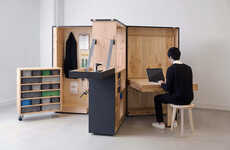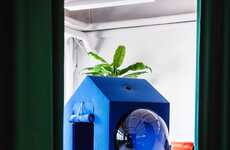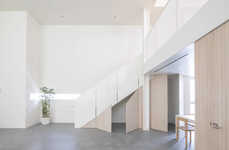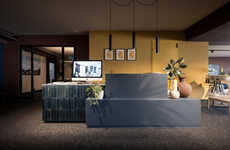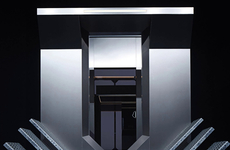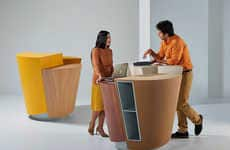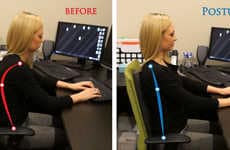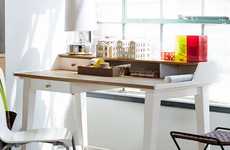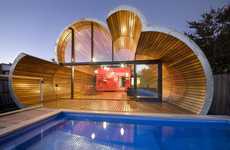
Antonio Scarponi and Roberto de Luca's Hotello Makes Warehouses Livable
Brandon Bastaldo — March 27, 2013 — Art & Design
References: conceptualdevices & urdesign.it
If you've ever wondered what working in a post-apocalyptic office would be like, look no further because designer Antonio Scarponi and visual artist Roberto de Luca's pop up work space called the Hotello is probably the most realistic glimpse of white collar work after the end of the world that we've got.
Surrounded by hospital curtains and illuminated by a somber lamp light, Scarponi and de Luca's Hotello is a four square meter unit that looks militaristic in many senses, something its designers intended.
Anthony Scarponi explains that rapid industrialization in the 20th Century has left us with many empty warehouses and loft spaces and the Hotello is a contemporary work space made to make these vast living and working spaces habitable again.
Surrounded by hospital curtains and illuminated by a somber lamp light, Scarponi and de Luca's Hotello is a four square meter unit that looks militaristic in many senses, something its designers intended.
Anthony Scarponi explains that rapid industrialization in the 20th Century has left us with many empty warehouses and loft spaces and the Hotello is a contemporary work space made to make these vast living and working spaces habitable again.
Trend Themes
1. Post-apocalyptic Offices - Designers are creating pop-up workspaces with a militaristic, post-apocalyptic aesthetic, presenting disruptive innovation opportunities for office design and architecture.
2. Utilizing Empty Warehouses - The Hotello work space is designed to make use of the many empty warehouses and loft spaces left over from rapid industrialization, presenting disruptive innovation opportunities for adaptive reuse design and real estate development.
3. Compact Work Spaces - The Hotello's four square meter unit suggests that compact and efficient work spaces may become increasingly popular, presenting disruptive innovation opportunities for furniture and interior design.
Industry Implications
1. Office Design and Architecture - Post-apocalyptic and militaristic aesthetics in pop-up workspaces present disruptive innovation opportunities for the office design and architecture industry.
2. Adaptive Reuse Design - The Hotello's use of empty warehouses and loft spaces presents disruptive innovation opportunities for the adaptive reuse design industry.
3. Furniture and Interior Design - The compact and efficient design of the Hotello work space suggests disruptive innovation opportunities for the furniture and interior design industry, particularly for space-saving solutions and multi-functional items.
2
Score
Popularity
Activity
Freshness




